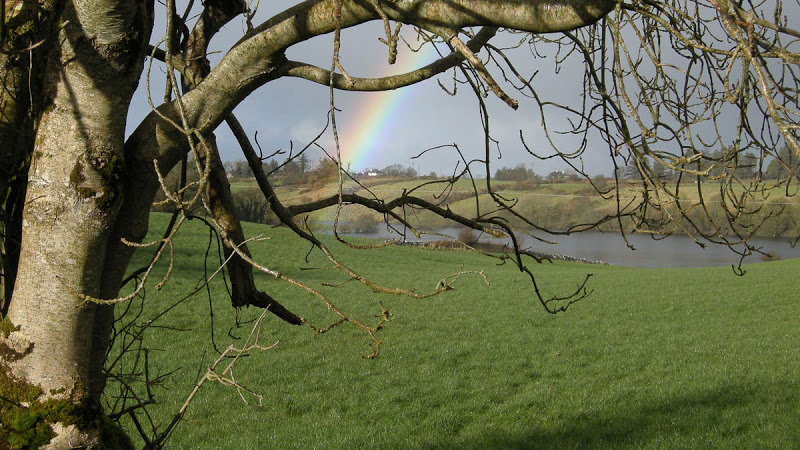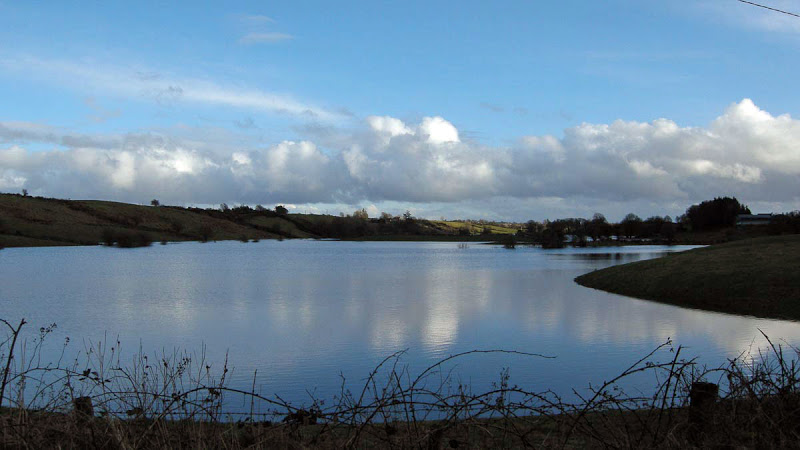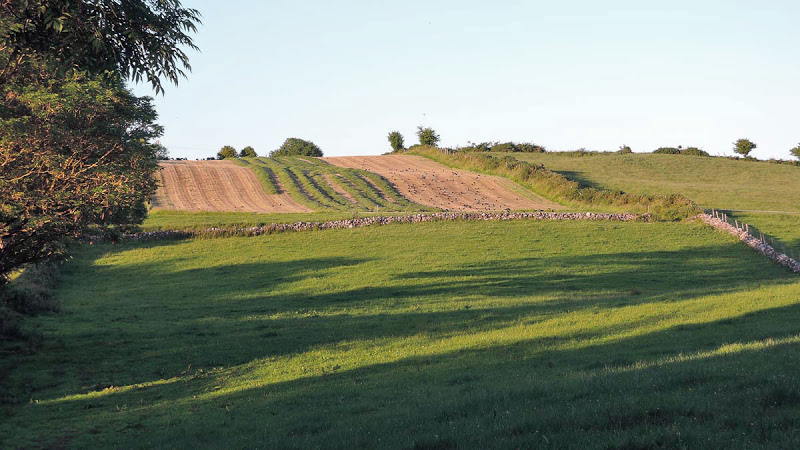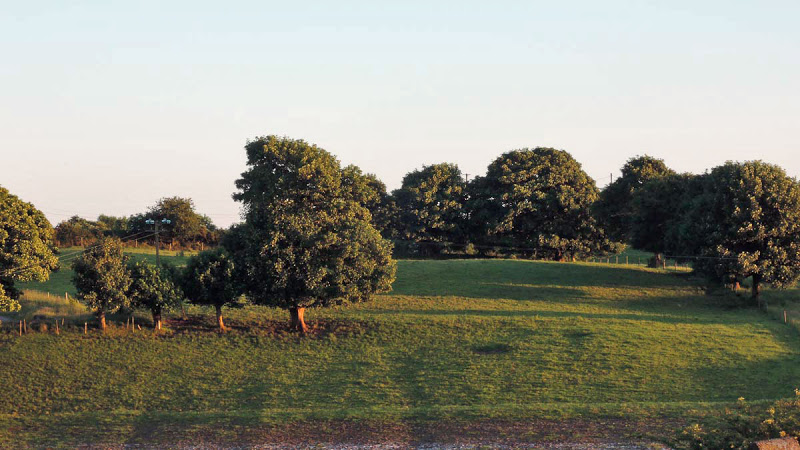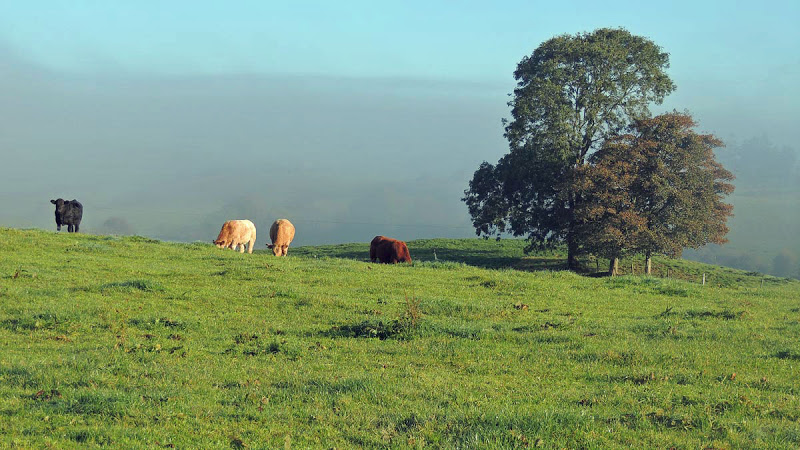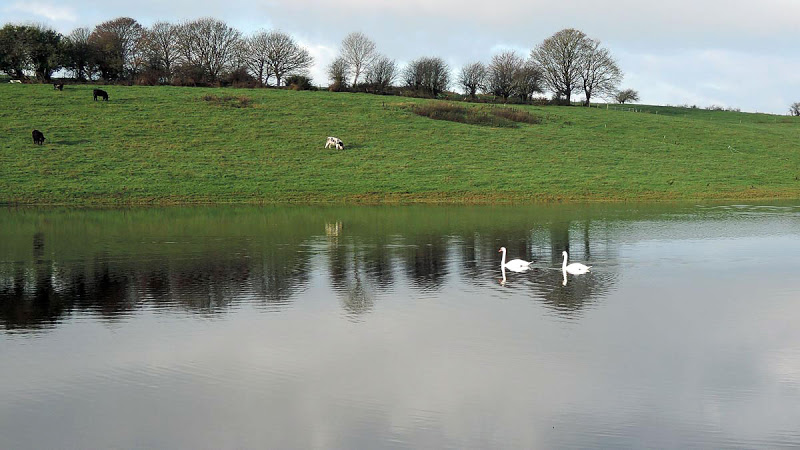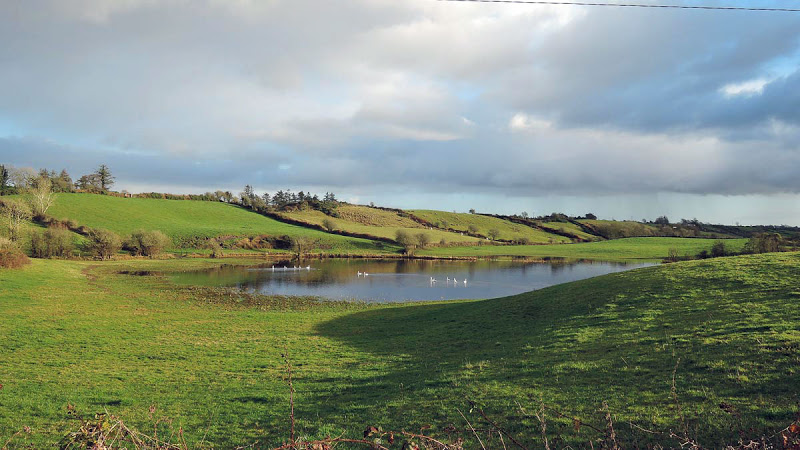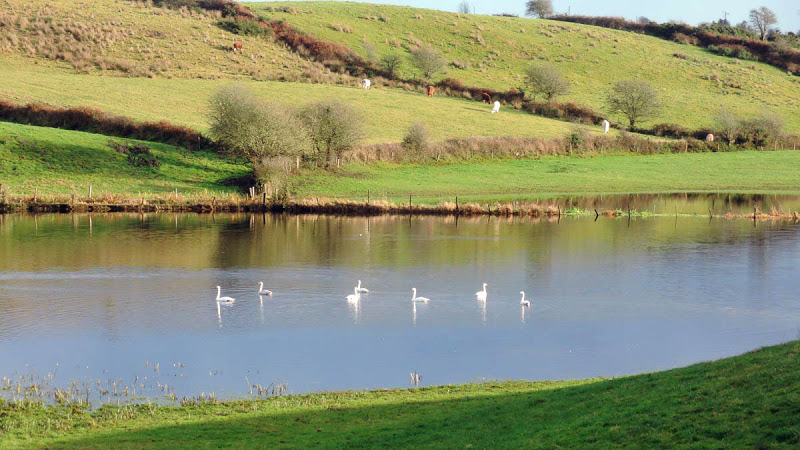Facefield Loop Walks in Co. Mayo

Facefield Loop Walks are pleasant circular strolls suitable and enjoyable for all family. The terrain consists in country lanes and quiet narrow roads. They are easy to walk and wind along gentle hills and farmlands. The landscape is peaceful and relaxing.
From Balla take the N60 heading in the direction of Claremorris. After 5 km watch out for a grotto and here turn left off the main road following the signpost for Facefield.
Here take a look on your left, the ancient ruins of Brize Castle stand on a top of a gentle hill. Follow the small road until you reach a T-junction, here turn left following the signpost for Facefield church and school.
The little church-school is the starting and finishing point of these trails. Here you can park your car just outside the church and choose the loop it suits you the best following the black finger signposts.
There are three loops:
-
Green Loop a 3.8 km walk
-
Blue Loop a 7 km walk
- Red Loop a 10.4 km walk
The walk directions are very easy to follow: walk along the road following your colour travel arrow. Along your way you will experience the real hidden gems of rural Mayo and see working farms at close quarters.
Early in the morning you will spot pheasants and little hares running gleefully in the fields and the elegant wild swans swimming in the turloughs in wintertime, or the swallows, robins and pied wagtails flying busily about their daily chores in springtime.
After about 1 km you will reach a T-junction in the town-land of Acres, here take your time to have a look at some drumlins in front of you.
In wintertime the field on your right turn into a turlough changing the landscape widely. It is home to wintering populations of whooper swans, waterfowl and golden plover.
Then continue following you colour travel arrow. All around cows graze in the grasslands.
The countryside is rich in flora including primrose, hawthorn, bramble, buttercup, red clover, fern and honeysuckle. The brightly yellow coloured gorse grows in great abundance. Oak, ash and elder grow along the lanes.
Walking along the Blue Loop you reach Tawny Lough, a narrow and long little lake, where ducks and swans can be spotted.
Following the black fingers signposts you will be back at the Facefield church and school. Remember to wear walking shoes and bring rain gear, snacks and fluid with you.
Did you know?
Turloughs are vanishing lakes most common in Mayo and Galway. Usually they flood in autumn and start to drain in springtime, turning back into rich grassy bowls in summer. They are unique among European landscapes.
Turlough, meaning 'place that dries out’, vary the landscape and we can consider them temporary lakes but also temporary fields.
They occur in areas where limestone rock is exposed at ground surface. Rainwater dissolves this kind of rock creating a sort of web of underground channels, which high rainfall fills with water. The water spills upwards coming to the surface in low-lying basins and making the turloughs.
In winter turlough’s water is usually far from stagnant, there is a constant downwards flow, maintained by the rainfall.
Turloughs support a wide mixture of aquatic and terrestrial flora and fauna; for this reason they are a priority habitat under the EU Habitats Directive and most of them are designated as Special Areas of Conservation or SACs.

